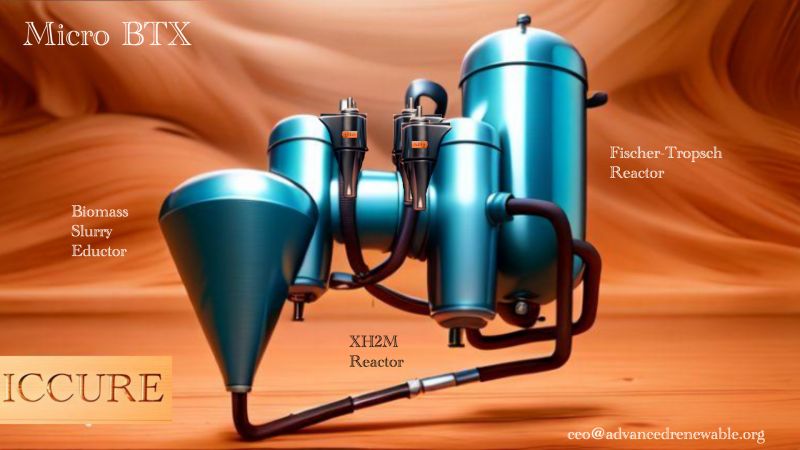Micro BTX for Survival Energy Solution (SES)
Advanced Renewable
Fri , 26 Apr 2024 20:40 WIB

If in the digital world, our notebook computers already have a processing capacity exceeding the mainframes of the 80s, in the world of industrial processes, reducing the size of plants is not yet commonplace. As a result, industrial processes that involve the needs of the wider community are still dominated by the oligopoly of a handful of world-class players. For example, fuel fulfillment around the world can still be counted on our fingers.
Is it possible for us to simplify this industrial process so that it can be made in small sizes? Very likely. Seven years ago, when we started making gasification machines, the smallest one still weighed 3 tons and was of course expensive because of the large amount of material needed. The gasification reactor that we are currently making is only around 30 kg in size and the cost is certainly cheaper, while the capacity is relatively the same as the 3 ton one.
This gasification system, which can be scaled down, will be an enabler for various subsequent, more efficient processes. The image below, for example, is a Micro BTX, Biomass To X reactor, where the X can be LPG gas, gasoline, diesel, etc. This AI-designed Micro BTX reactor will enable sub-district level waste processing - at TWSS, Temporary Waste Storage Sites, and the result will be cheap LPG gas which is much needed by residents in the sub-district itself.
The process from the front is more or less as follows, wet or dry waste is crushed to a slurry state then fed into the slurry eductor - namely the biomass feeder to the gasification system which works on the venturi principle, the biomass will be sucked into the gasification chamber without the need for a stirrer or pump.
In the XH2M (Extra High Hydrogen and Membrane) reactor, biomass is gasified and the syngas product is controlled with the parameter H2/CO>2. Syngas that meets this quality is channeled to the next reactor, namely the Fischer-Tropsch Synthesis (FTS) reactor.
At the sub-district level, the products are directed to 1 or a maximum of 2 products to keep things simple, for example LPG (Liquid Propane Gas) and petrol. Both can operate with the same catalyst, as well as temperature and pressure, the only difference being the residence time.
So if the reactor is run with a fast production turn-over the result is LPG, if the process takes a little longer it becomes gasoline. Even if you mix the two, it is easy to separate because LPG is a gas at STP (Standard Temperature and Pressure), while petrol is a liquid.
This sub-district scale micro BTX can not only accelerate the energy transition process, achieve SDG no 7 - Affordable Clean Energy, before 2030, make sure the achievement of Net-Zero Emissions 2050, can also be a Survival Energy Solution (SES) if the World War III really happen as Putin's presidency remind the world for the possibility of it.
Other Post
Bahan Bakar Regeneratif (RF)
Apr 26, 2024
Decarbonization Talk With Jakarta Governor Candidate
Apr 26, 2024
Waste To Energy Miniplant
Apr 26, 2024
Circular 3F : Foods, Fuels and Fertilizers
Apr 26, 2024
Green Hydrogen Carriers and Deliveries
Apr 26, 2024
Categories
Renewable Energy






Please register first!
For post a new comment. You need to login first. Login
Comments
No comments